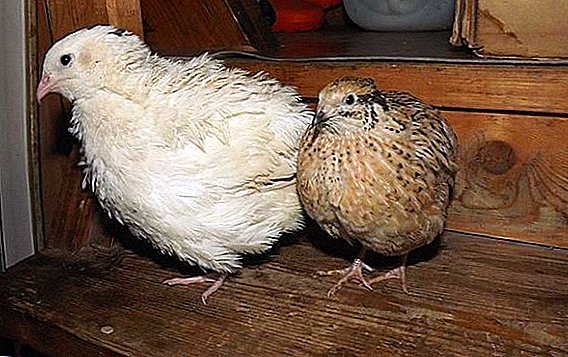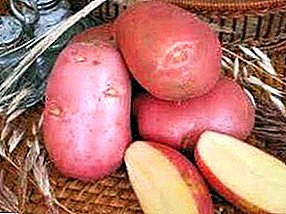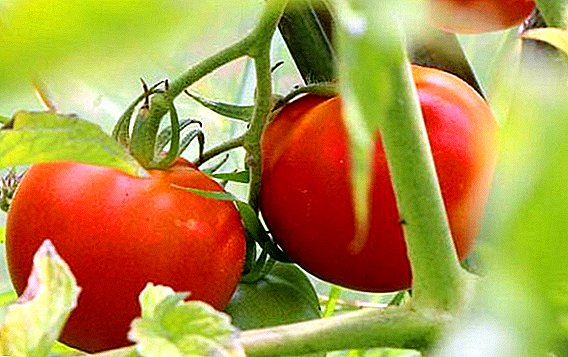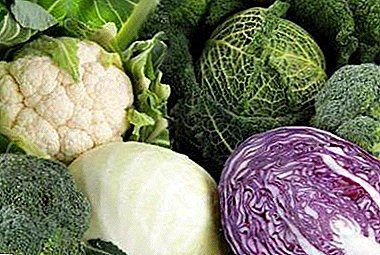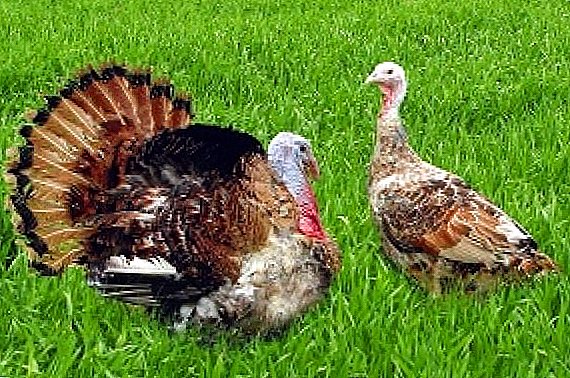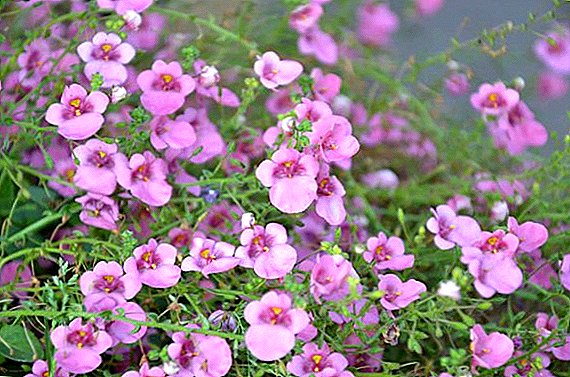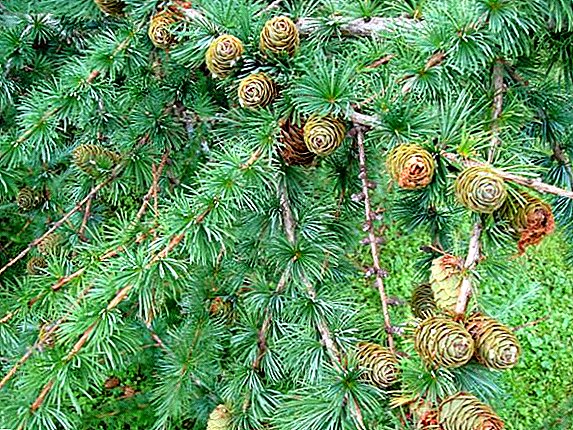 Pheasants are incredibly beautiful and graceful birds, but, unfortunately, their beauty has become destructive for them.
Pheasants are incredibly beautiful and graceful birds, but, unfortunately, their beauty has become destructive for them.
Hunting for pheasants has long been in the ranking of the most popular, because hunters are attracted not only by a beautiful plumage, but also by the prospect of eating delicious game. Some species of pheasants are already very few and people begin to think about their breeding.
In this article you will find a lot of interesting information about the life and habitat of one of the most beautiful representatives of these birds - the royal pheasant. In addition, you will learn how much this bird costs and how to breed it correctly.
Description and appearance
Royal-looking pheasant feathers resemble fish scales, because they have black and brown kaemochki. The head is black in color, with a snow-white “cap” on top, and around the neck is a wide two-tone collar. The wings are lighter, the feathers also have rims, and the area of the abdomen and chest is colored black-brown.
The legs are gray with lead shimmering, the beak is of a light gray color, and black and silver-gray stripes alternate on the tail. The length of an adult male is about 210 cm, and the tail is 100-160 cm.
Read the description and features of the content of gold, white and eared pheasants.
The female looks quite different: the head is dark brown, the area near the ears and strokes near the eyes have a shade closer to black. The feathers of the upper part of the wings are chestnut-brown with black specks, and the tips are gray.
The lower part of the feathers has a slightly green tide. On the colorful tail there are perpendicular black and brown stripes, at the ends of the steering feathers change color to blackish white. At length, the adult female reaches 75 cm, and its tail is 35-45 cm. 
Where live and how much live
The habitat of royal pheasants are mountain forests in the center and in northeastern China at an altitude of 300 to 1800 meters above sea level. They are also found in canyons and valleys. These birds love deciduous forest, but coniferous for them is also quite suitable.
Did you know? There is a small group of royal pheasants in Great Britain. It was formed from individuals who once were able to escape to freedom.
Life expectancy in captivity ranges from 10 to 20 years, depending on living conditions and other factors, there is no data from the wild.
Lifestyle and behavior
Royal pheasants are ranked as sedentary birds, they calmly react to changes in the weather and easily endure both heat and cold. In the cold period, they live in groups of 6-10 individuals, and with the advent of heat they are divided into smaller groups. They are awake during the day, mostly looking for food, sleeping at night on the tops of trees.
Males have a certain feature: they always have their own territory even outside the breeding season, and they are very attached to their place, which is confirmed by their constant returns.  By nature, males are more polygamous than monogamous. They are also quite aggressive in nature and rarely welcome guests on their territory, be it another pheasant, another animal or person.
By nature, males are more polygamous than monogamous. They are also quite aggressive in nature and rarely welcome guests on their territory, be it another pheasant, another animal or person.
What feeds on
The diet of the royal pheasant, who lives in the wild, includes acorns, fruits of berries, as well as a variety of invertebrates. In the cold season, when food is scarce, they can often be found at a meal on the outskirts of agricultural land.
Read more about the rules of feeding and breeding pheasants at home.
Breeding
As soon as the mating season comes, the males attract the attention of the females, making short but sharp sounds, while the females respond with a quiet cackle. If the male is serious, he lifts the feathers on his neck, flaps his wings, lifts his head high and uses his tail as a fan to attract the female.
King pheasants nest, like all other birds of this species, on the ground. In one laying there are from 7 to 14 eggs. Their number depends on how old the female is: the older individuals have more of them than the young. The hen for eggs is female, the period of brooding takes usually 24-25 days.  The male immediately after the female laid her eggs goes to look for another female, he does not raise and care for the offspring. Egg-laying, depending on weather conditions, begins at the end of March or in April and ends in June.
The male immediately after the female laid her eggs goes to look for another female, he does not raise and care for the offspring. Egg-laying, depending on weather conditions, begins at the end of March or in April and ends in June.
Did you know? The royal pheasant is considered a vulnerable species; its population in the wild has only 5,000 individuals. In China, these birds are protected at the legislative level.
How much is a royal pheasant
The cost of the male and female royal pheasant will differ, males are usually more expensive. Also, the price will depend on age: the older the bird, the more expensive it is. In Russia, the value of a royal pheasant ranges from 3,000 to 5,000 rubles.
In Ukraine, you can buy one bird for 200-350 UAH. Also on some farms you can buy hatching eggs, for example, in one of these farms in Ukraine, hatching eggs can be purchased for 15 UAH (if you buy more than 50 pieces, 12 UAH for an egg), one-day pheasant - 35 UAH for a piece, a week - 50 UAH per unit, month - 70 UAH. per piece, two months - 100 UAH. per piece  In Russia, hatching eggs can be purchased in the region of 50 rubles. per piece, and young individuals from 100 rubles and above.
In Russia, hatching eggs can be purchased in the region of 50 rubles. per piece, and young individuals from 100 rubles and above.
Important! Prices are averaged and may vary depending on the country and region where you live.
Is it possible to keep in captivity
It is possible to keep our pheasants in captivity, moreover, it will not require huge efforts. Since the males are polygamous, it is possible to acquire one male and several females. Aviary should be at least 15 square meters.
If your male has a long tail and the quality of the feathers is important to you (and he, as we already mentioned, can reach 150 cm), it is necessary to provide the birds with a wider area - about 60 meters or more square meters.
For these birds, the frosts of middle latitudes are not terrible, so you can not make additional heating for the winter. However, if you want to keep the tail in good condition, then try to keep the air in the room where the birds live dry.
Since royal pheasants in the wild like to sleep in the trees, in the aviary you need to make two or three perches from single and thick branches of trees (if possible, it is better to use the wood of coniferous trees) and fix them at a height of 1.5 to 2 m  Also, it is for these birds that you will need a shelter where they can hide when they get scared of something. Chicks hatch in an incubator. Then you will need cells with electrical heating of at least 2 square meters.
Also, it is for these birds that you will need a shelter where they can hide when they get scared of something. Chicks hatch in an incubator. Then you will need cells with electrical heating of at least 2 square meters.
150 chicks up to 20-25 days of age, as the royal species is more vulnerable to cold temperatures than, for example, the hunting species. After 25 days after birth, they need to be transferred to electrically heated enclosures and maintained there until 6 weeks from birth.
The density of landing in the aviary should be at least 1 individual per 1 square meter. With this mode of maintenance you are guaranteed a minimum loss of chicks. In summertime, pheasants can independently find food for food, eating various greens, worms and bugs, but with the onset of cold weather, it is necessary to pay more attention to their diet.
Learn how to catch a pheasant with your own hands.
Per adult bird should be about 75 g of feed, which includes:
- 45% of the ground corn grains;
- 20% crushed wheat grains;
- 10% fish dust;
- 3% meat and bone meal and yeast.

In the spring, along with the first warm days, sunflower oil, calcium and various berries should be introduced into the diet. Then pheasants will grow faster, and their meat will be more tender. Small pheasant feeds are usually fed with greens and finely chopped boiled eggs. At the age of two months they can already be transferred to the diet of an adult bird.
Important! If you feed pheasants with chicken feed all winter, you can achieve maximum weight gain.On this, our article about these beautiful birds came to an end. We hope that it was interesting and informative for you to learn about their lifestyle and habitat. If you intend to breed royal pheasants, then we wish you good luck in this business and good offspring.
Reviews from the network




